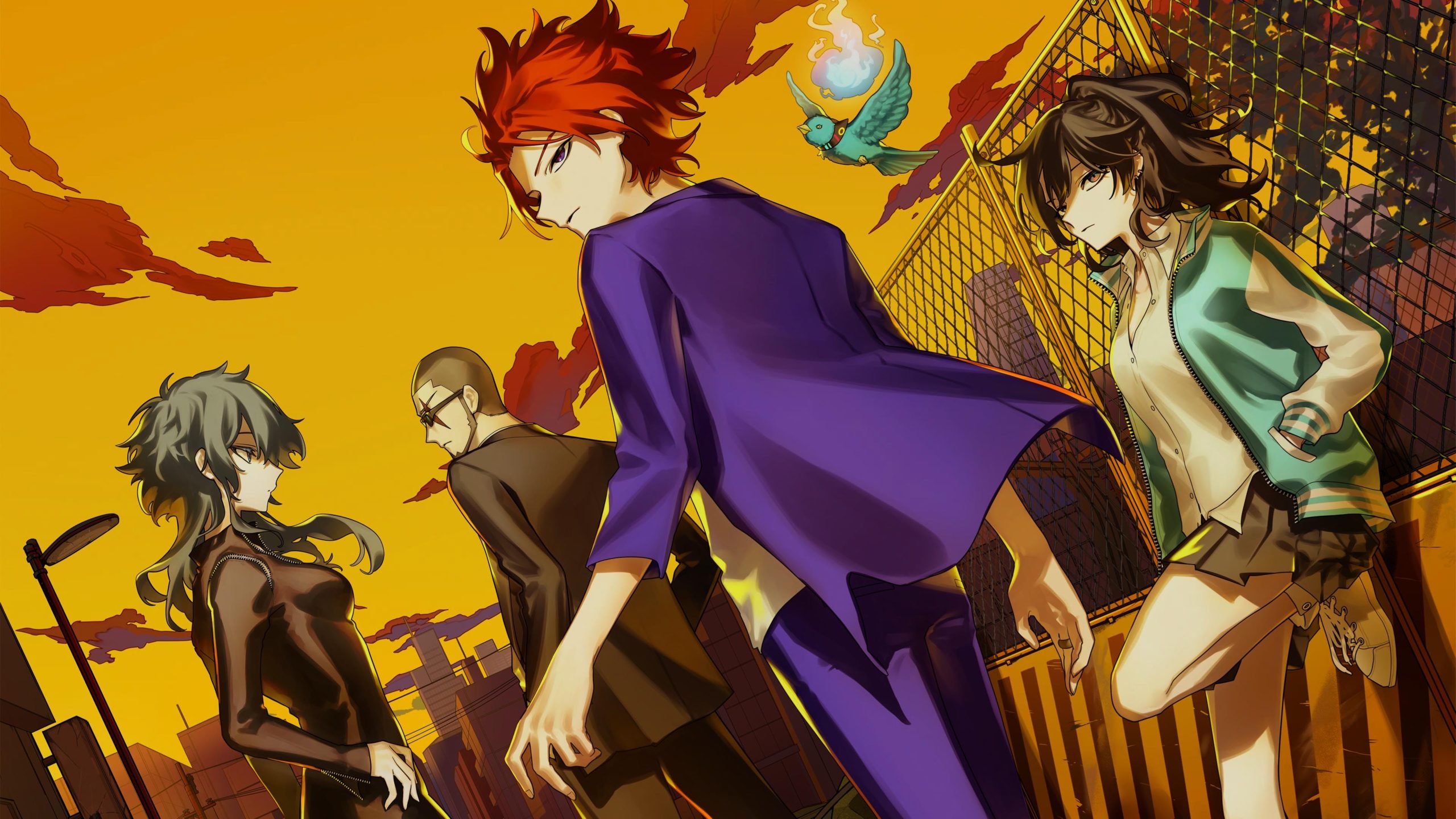From solo developer Ginolabo, with help from Shueisha Games on the publishing side, SoulVars finally launches outside of iOS/Android and onto consoles & PC. Originally released in January 2022, the game is described as a pixel art deck-building RPG with an anime influence.
I’ve recently discovered a love for deck-building games after reviewing Wildfrost, making SoulVars instantly intriguing. Blending the influence and the setting just sealed the deal for it to be something I could potentially get stuck into. So did I have a royal flush on the horizon, or did I end up playing 52-card pickup? Let’s get into it.
Digital Monsters
You’re briskly thrown into the role of Yakumo, a Soulbearer for hire. Monsters named Dominators are plaguing Japan and it’s up to you to stop them. These Dominators came after human souls were able to be converted into data, causing them to manifest from humans and devour other souls. Soulbearers are humans who can bear another soul as they’re resistant to Dominator influence, meaning they can transform into their AltSoul and defeat them.
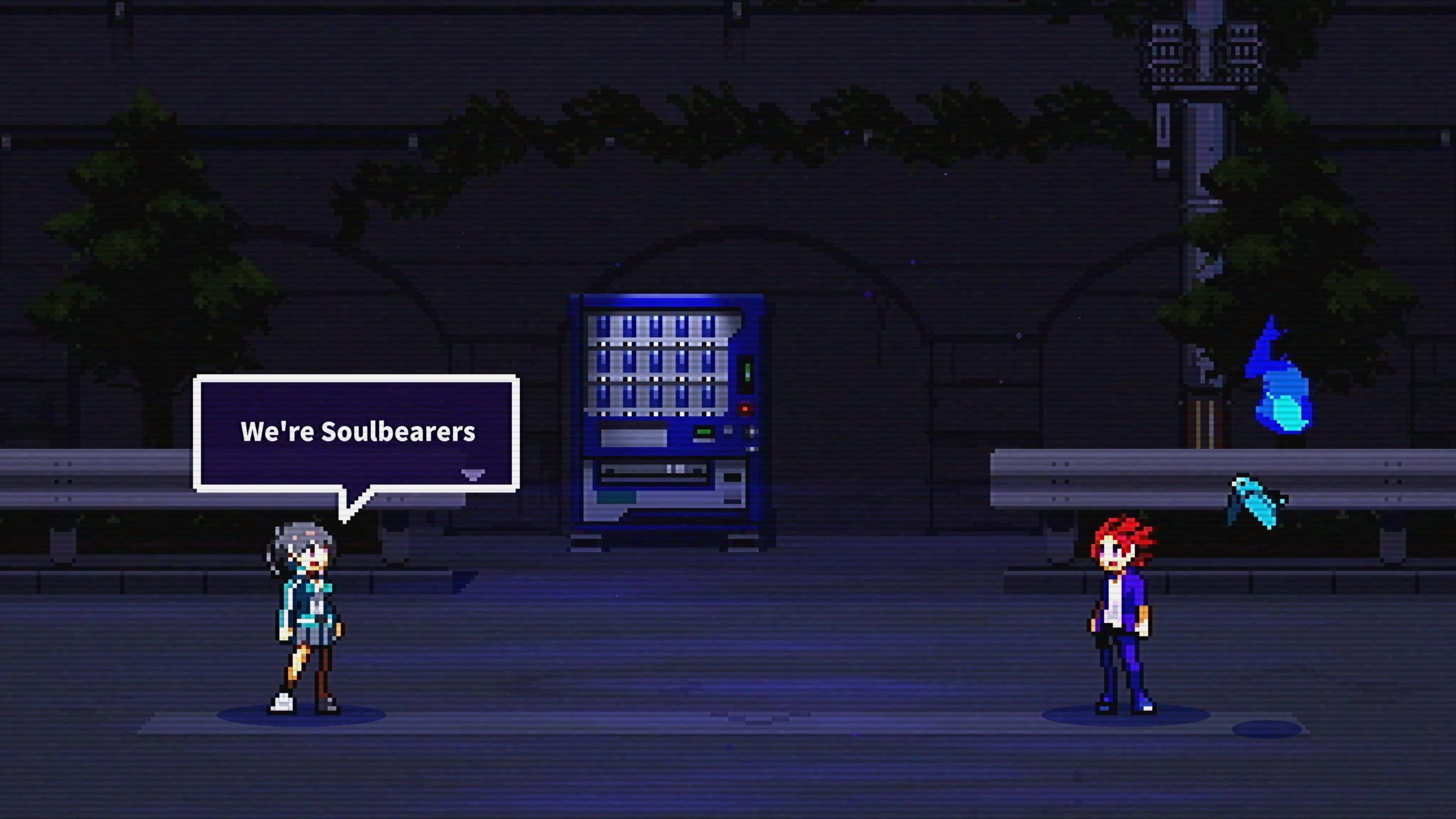
There are a whole lot of lore factoids you’ll find in the glossary, such as Souldivers being the device to extract souls to harness, or gates opening as the result of Dominators, having varying power levels. However, this is the extent of explicit lore or big picture you’ll get playing through the game. When I mentioned briskly being thrown into the role, I really mean it. You meet Yakumo then a second later you enter a tutorial for the gameplay (which I’ll talk about later) and it doesn’t slow down.
Most characters you come across are fellow Soulbearers who are part of DDO (Dominator Disposal Organization). They’re more of an official group that does Yakumo’s job too and the source of the tech behind beating the Dominators. Some will be allies, whilst others have defected and become corrupt and that’s about the gist of a story. You mostly face quippy one-liners that have a stench of attitude but fail to explore the characters in any meaningful way. I quickly started to disregard what was going on and set my focus on the diverse game mechanics instead.
Bearing Its Soul
I think it’s important to note again that this was originally a mobile game. If you haven’t taken a dip in either Apple Arcade or games that aren’t pay-to-win, you’re missing out on some delightfully bite-size games. SoulVars’ transition onto consoles and PC doesn’t ever manage to shed that mobile game skin. The UI is all-encompassing, creating a whole border filled with stats, attacks, time of day etc. It’s quite an eyeful.
This supports a seamlessly in-depth combat system that is the major shareholder of SoulVars. It’s a lot to take in so bear with me. Combat is turn-based, however, depending on what weapon or armour you equip, your abilities change. Each item has an amount of Soulbits (cards) which act as your actions. You’ll draw 5 random Soulbits at the start of the battle. If you run out or are low, you can use 25% of your health to draw more, so ideally you want to win fast, much like the game insists – more on that later.
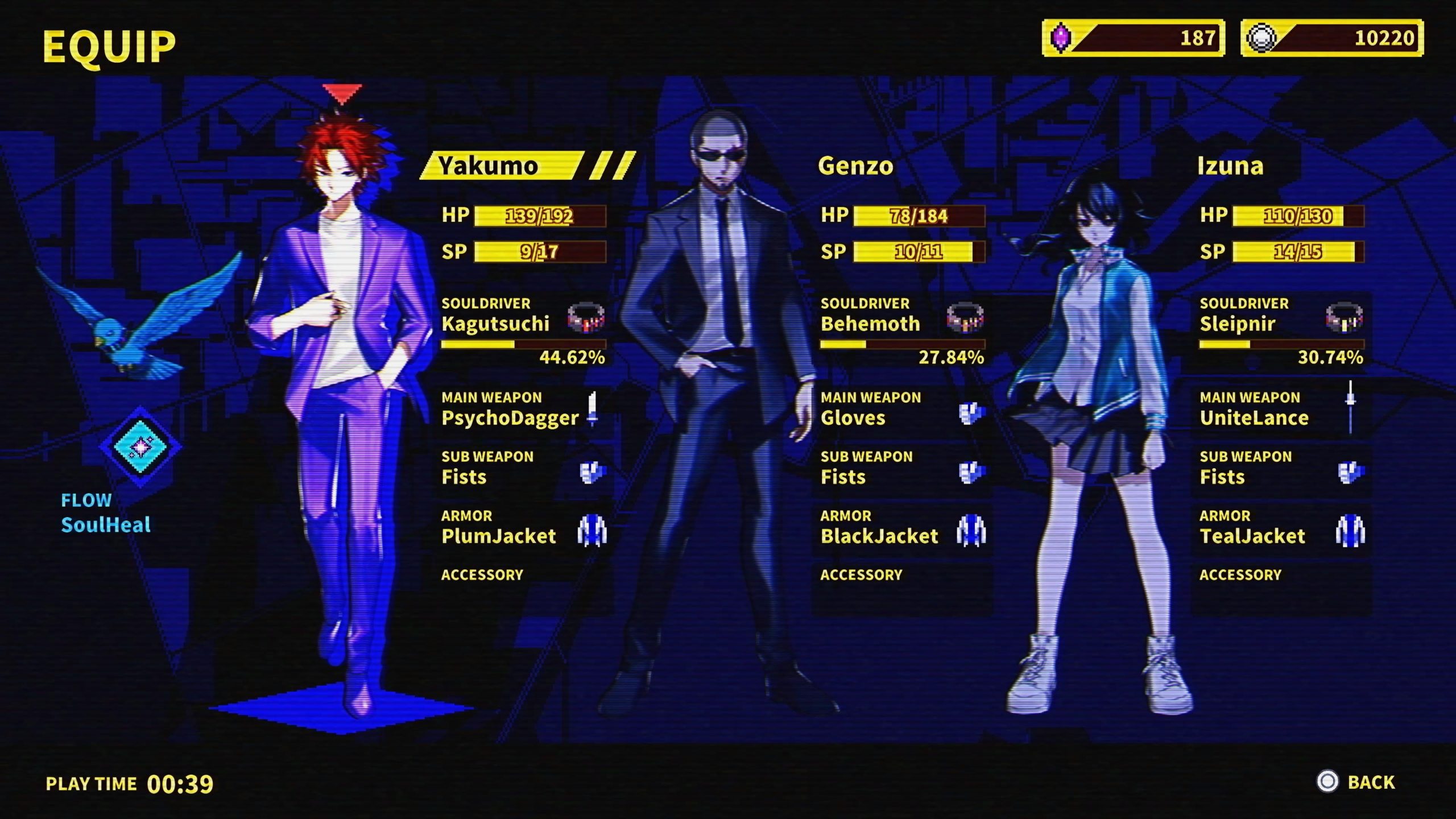
These actions can relate to a Soul Art, which is kind of like a limit break from Final Fantasy. Attacking an enemy that has a weakness to said attack grants momentum, meaning you can play more cards per turn. Soul Arts require two cards which then do high damage to the enemy. You can buy or find different Soul Arts and each has a unique combination. Your job is to equip specific items that have the right Soulbits to pull them off. Are we all still here?
Depth of Cards
Using the Soul Arts levels them up to be more powerful and wrecks your opponents. On the other side of that, you have the Alternation ability. This is the AltSoul I previously mentioned that can only trigger when you’re below 30% health. This creates a strategic advantage as once you transform you go back to full health and can use the AltSoul’s ultimate ability causing massive amounts of damage. With that said, the bread and butter are the Soul Arts; those are what you work towards the most.
It’s also where the grind through the bulk of the game is. You’ll get to a point where your normal equipment and abilities aren’t enough and you quickly learn the methods of min-maxing your composition. Like deck-builders, you don’t want to overdo your hand and create a bloated RNG drawing useless cards. Similarly, you don’t want to focus on one strength as enemies have all sorts of weaknesses that’s shown to you. So you learn new Soul Arts, grind the levels of them to be adequate and repeat.
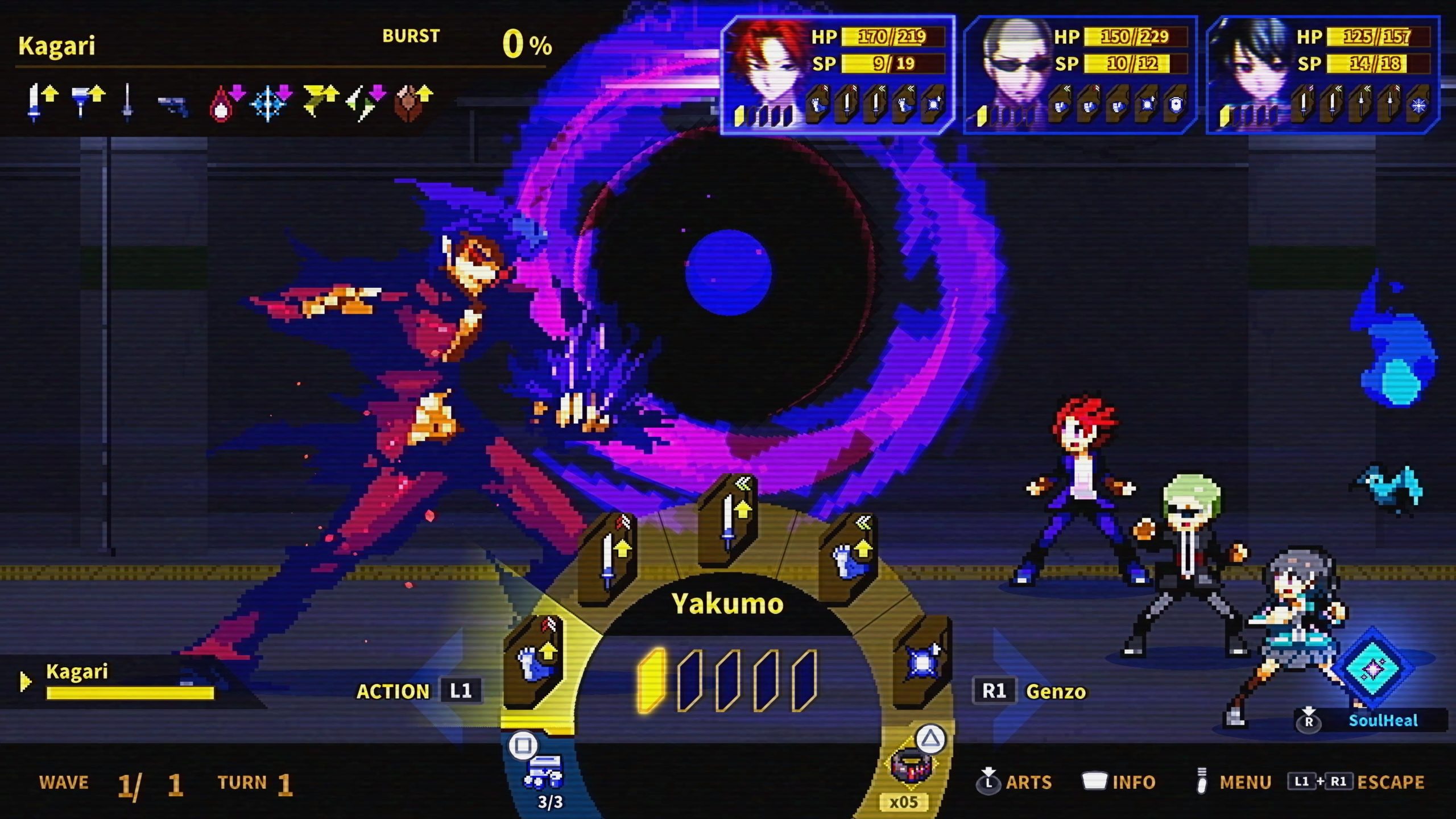
There’s also a whole timed element where every action like moving to a new screen in the dungeons or resting to regain health adds to the clock that is always ticking. Missions only pop up during certain times of the day, and others need to be done before it’s too late. It makes you feel at the mercy of the clock sometimes, forcing you to play more specifically. In the early game, it is just fighting, get stronger, repeat. Here in lies why it can’t shed its mobile game skin, as this feels so set up for short bursts of playing. I find it hard to play hours at a time because the structure doesn’t cater to it and the content feels light.
Neo-Tokyo Is About To Explode
Admittedly because of SoulVars’ structure, I’m not very far. This seeps into the grindy trophies on the PlayStation, as well as there only being one thing to do. Traversal is a case of picking a direction and changing screen similar to the Etrian Odyssey formula. You then click L1 or R1 to change what to click on, whether it be an NPC or an item to pick up. NPCs don’t have much to offer in dialogue and items are so plenty you miss the importance of them. The game has managed to pull off a technically impressive combat system that’s deeper than a lot of AAA games, just everything else doesn’t have as much staying power.
Whilst the pixelated sprites are eye-catching – including the monsters – the environments are barren and mostly a palette change. The music feels like it would fit right in Metal Gear Solid, having the orchestral instrumentations receive a synth application that would make Harry David Gregson-Williams and the Konami composers proud. Though the tracks are short and you’ll notice when they replay, breaking the epic immersion of combat.
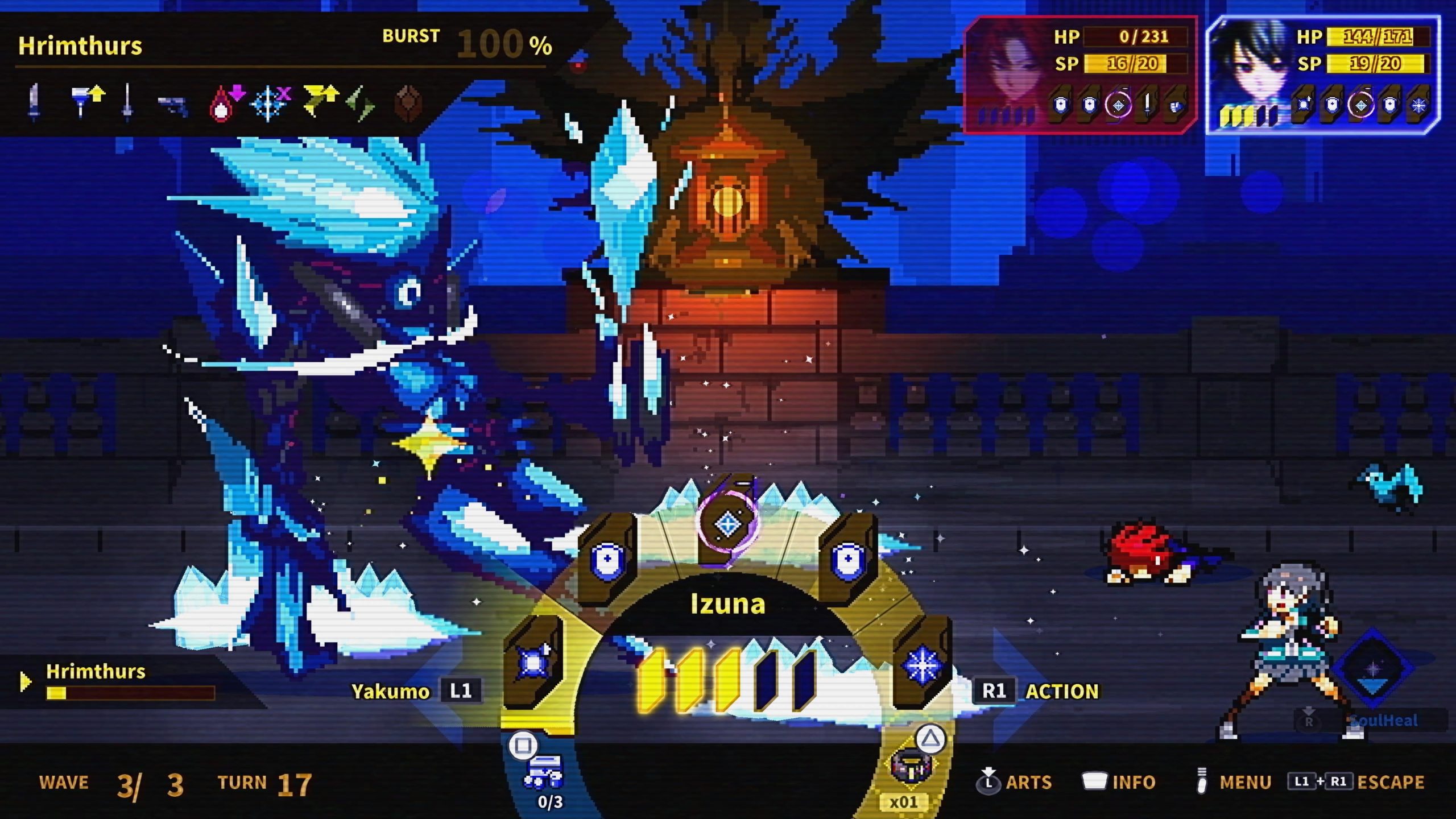
Last Living Soul
Overall, I have mixed feelings about SoulVars. Had I caught this on my mobile and chipped away at it between life happening I wouldn’t have felt the grind so quickly. Nothing outside of the combat did much for me, which is a shame as everything about it was in my wheelhouse of interests. I can’t exclaim enough how fun the combat is, but it will be the only thing you do with your 10+ hours. The systems are neat, the story and world you learn mostly in Glossary just feels like a background, however.
I do want to mention that the quality of the port is seamless, I assume it wasn’t easy to translate but everything felt extremely intuitive and easy to pick up and play on console, and that alone is a great achievement. Maybe my expectations were a little high for this, but I will try and chip away and master the Soul Arts.
SoulVars is a great console port of a mobile game, but it doesn’t quite do a good enough job of keeping you hooked whilst playing. The combat system is exceptional by being and rewarding albeit a little grind. Unfortunately, the story and influence are left as set dressing.

SOULVARS is available now for PlayStation 4 and 5 (reviewed on the latter), Xbox One, iOS & Android and PC via Steam.
Developer: ginolabo
Publisher: Shueisha Games
Disclaimer: In order to complete this review, we were provided with a promotional copy of the game. For our full review policy, please go here.
If you enjoyed this article or any more of our content, please consider our Patreon.
Make sure to follow Finger Guns on our social channels. Twitter, Facebook, Twitch, Spotify or Apple Podcasts – to keep up to date on our news, reviews and features.
